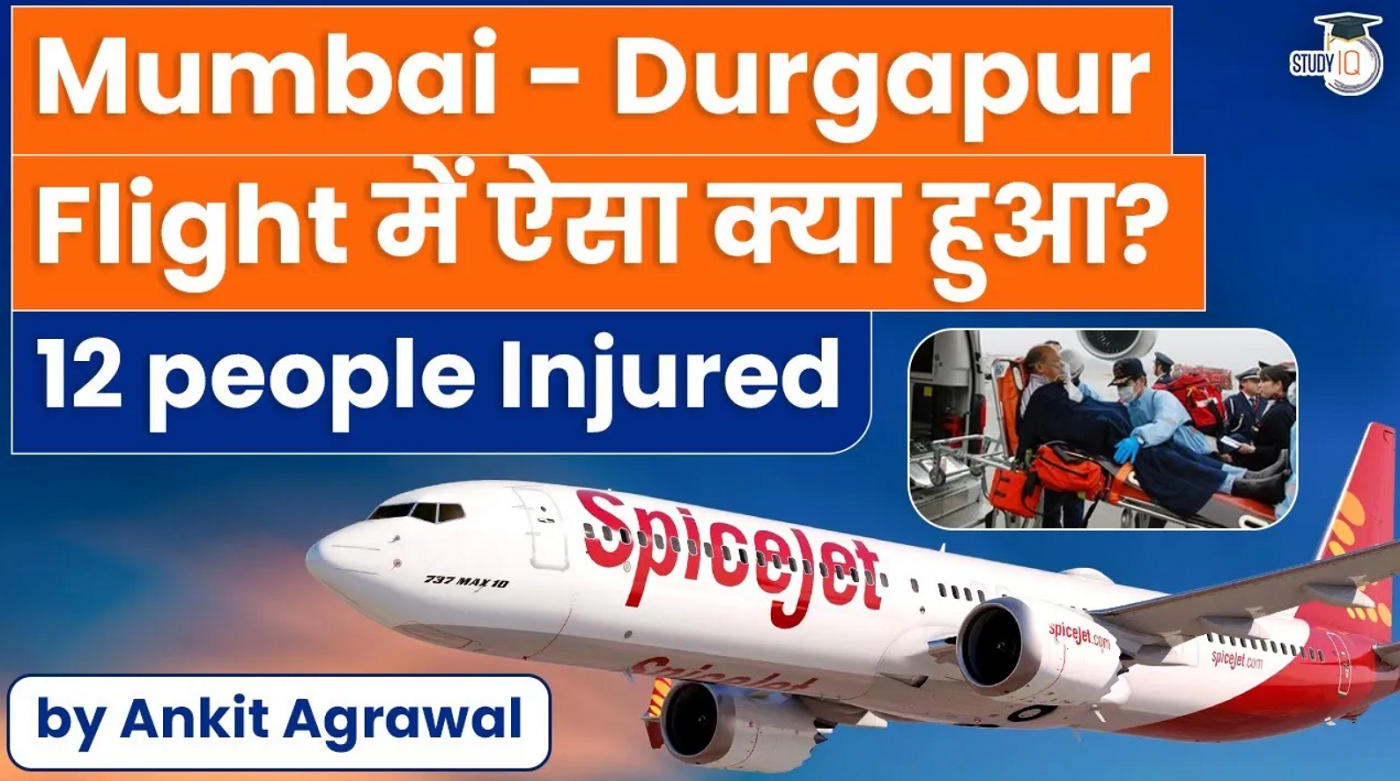Table of Contents

What has happened?
- At least 40 people on board a SpiceJet flight from Mumbai to Durgapur in West Bengal Sunday suffered injuries, With 12 of them being seriously hurt, after the airline’s Boeing 737-800 plane encountered severe turbulence during its descent.
- India’s aviation safety regulator — the Directorate General of Civil Aviation (DGCA) — has deployed a multi-disciplinary team to carry out a regulatory investigation into the incident.
About the incident
- A SpiceJet flight operating Sunday evening from Mumbai to Durgapur in West Bengal underwent severe turbulence that resulted in mild to serious injuries to at least 12 passengers onboard the Boeing 737-800 aircraft, according to DGCA officials.
- The aircraft took off from Mumbai a few minutes after 5 pm on Sunday and was on its approach to Durgapur’s Kazi Nazrul Islam Airport after a two-hour flight when it encountered severe turbulence that caused the passenger injuries.
- The 189-seater aircraft, however, landed safely at Durgapur at 7.15 pm, following which the injured passengers were provided medical attention.
- It was not just the passengers but also some cabin crew members who suffered injuries.
- These people received head and spinal injuries.
What happens during turbulence?
- As a bare concept, turbulence means disruption of airflow over the wings of an airplane, which causes it to enter irregular vertical motion.
- There are at least seven different kinds of turbulence, to which an aircraft can get subjected.
- These include weather-related turbulence, in which the plane flies through a thunderstorm or a heavy cloud, and second is clear air turbulence, which is mainly caused by wind or jet-streams.
Are they dangerous?
- It depends on the nature and the intensity of turbulence. Aircrafts undergo some form of turbulence on a regular basis and pilots are trained to deal with these disturbances.
- However, there have been several cases where turbulences have brought down modern jetliners.
- Even in these cases, while intense turbulence has been the main cause of an accident, several other contributory factors — Such as lack of proper training, poor dissemination of weather or wind related information — play a huge role in making the accident happen.
Investigation into SpiceJet incident
- As a standard practice, the investigation will focus on a number of factors to ascertain why it was that the incident caused severe injuries to the passengers.
- These include the weather conditions when the plane encountered turbulence, whether or not the pilots were caught unprepared when they encountered the turbulence and Whether they asked the cabin to prepare for incoming disturbance to the flight.
- Notably, the passenger charter of rights issued by the Ministry of Civil Aviation in 2019, says that for domestic travel,
- In case of death or bodily injury to a passenger on-board an aircraft, the airline is liable to pay up to Rs 20 lakh per passenger.
What must passengers do?
- According to the US Federal Aviation Administration (FAA), “Passengers can easily prevent injuries from unexpected turbulence by keeping their seat belt buckled at all times”.
- The FAA suggests that passengers should listen to the instructions being given by the flight attendants; pay attention to the safety briefing at the beginning of the flight and read the safety briefing card; wear a seat belt at all times; use an approved child safety seat or device if a child is under two; and adhere to your airline’s carry-on restrictions.
Q) In which year Bureau of Civil Aviation Security was set up in the wake of the hijacking of the Indian Airlines flight?
- 1971
- 1978
- 1986
- 1999
Latest Burning Issues | Free PDF

























 WhatsApp
WhatsApp